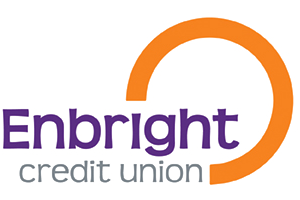You’ll probably agree that you should regularly be saving money. But where should you put it? You probably want to keep it safe, you probably want access to it for an emergency or when you’re ready to buy what you’re saving up for, and you probably would love for it to earn you more money without having to do anything.
Well, the first thing to know is that keeping your savings under your mattress or mixed in with your checking account isn’t the best option.
Reasons not to keep your savings under your mattress:
- It could be stolen.
- It’s hard to keep track of how much money you have at a glance.
- It’s not earning you any additional money in interest.
Reasons not to keep your savings in your checking account:
- It is mixed in with your money for your everyday expenses.
- You aren’t earning additional interest on it.
Next, before considering where you should put your savings, you’ll need to know how to balance your need for quick access to your cash (also called “liquidity) with your need for it to earn you enough money to keep up with the rate of inflation. The problem of putting your money where it doesn’t earn you any interest is often called “cash drag.” It’s a problem because the $1,000 you work hard to save today won’t be worth the same, i.e. will have less buying power, in five, eight, or fifteen years. So, if your savings isn’t earning you money, it’s actually losing you money. And that’s a drag.
Now that that’s covered, below are five savings options (sometimes called “savings vehicles”) to maximize your interest earnings and help you reach your savings goals.
1. Interest Checking Accounts
Many credit unions have special interest checking accounts. Requirements to open one will vary, as will the annual percentage yields (APYs, i.e., the amount of interest earned, taking into account its compounding schedule).
One of the common restrictions on an interest checking account is the balance cap. This is the maximum amount of money you can hold in the account before you begin earning a lower APY. So, say the balance cap is $10,000 and the advertised APY is five percent. As long as you maintain a balance under that cap, you can earn that high-interest rate. If your balance exceeds the cap, you’ll start earning a drastically lower APY. For this reason, the secret to making the most of this type of account is to stay as close to the balance cap without going over to maximize the interest you earn on your money.
Other common requirements for interest checking accounts include opting to receive electronic instead of paper statements, having a set number of direct deposits going into the account each month, and making a minimum number of debit (withdrawal) transactions a month.
This type of account could work well for someone who wants to house all or part of their emergency savings up to the balance cap and then simply set up recurring deposits and debits for smaller monthly bills—like a cellphone, gym, or TV subscription bill. Just be sure to keep track of your accumulating interest so you can transfer it to another account, keeping you safely under the balance cap.
High-interest checking accounts are a good solution to the cash drag vs. liquidity dilemma mentioned earlier. With this type of account, you can easily access your savings while also earning enough to prevent cash drag. It’s also a safe move because your deposits are federally insured up to $250,000 by the FDIC or NCUA.
2. Basic Savings Accounts
If you can’t meet the requirements of an interest checking account but still want quick, easy access to your cash, then a basic savings account is a good place to start. It’s easy to make withdrawals and transfers between accounts, you can view your balances through your online account or credit union’s mobile app, and you can make withdrawals from an ATM. At most credit unions, the requirements to open a savings account are minimal, as all you need is a starting deposit as low as $5!
The drawback is that most basic savings accounts only earn you one percent or less on your balance—not even enough to keep up with inflation.
3. High-Yield Savings Accounts
This is your option that’s somewhere between an interest checking account and a basic savings account. The earned APY can be as high as five percent with ease of access to money and mobile banking features; however, the requirements may be easier to meet than an interest checking account.
4. Goal-Oriented Savings Accounts
This is similar to a basic savings account, usually with the same APY and balance requirements, but one that can help you reach your savings goals faster by giving you a psychological boost.
A goal-oriented savings account allows you to earmark funds for a specific purpose—buying a car, going on vacation, having a down payment on a house, etc. You’ll be able to name the fund and separate it from other savings accounts—sometimes all these means is creating a subaccount under the same account number as your basic savings. Your credit union may have ways to set up alerts to let you know when you’ve reached certain benchmarks, like reaching the halfway point and tie action items to those events, like shopping for flights or filling out loan paperwork.
5. Share Certificate or Certificate Accounts
A share certificate or certificate account is a credit union version of a bank’s certificate of deposit (CD). The name is slightly different, but the principles are the same. With a share certificate, you deposit a set amount and promise not to make any withdrawals for a set amount of time. The longer you promise not to spend it, the higher the interest rate you earn on it. There are a variety of time frames to choose from—anything from a month up to 10 years. However, with this higher interest rate, you lose out on liquidity: if you need to make a withdrawal before the account matures, you’ll pay a hefty fee.
If you already have an easily accessible stash of cash in a regular savings account, a share certificate can be a good option to put additional savings into.
In the end, for most people, having a smart savings strategy comes down to having a mix of savings vehicles, with the aim to balance liquidity against cash drag, and short- against long-term savings. The goal should be to make sure your money is still working for you and earning maximum growth while you wait to use it.
















